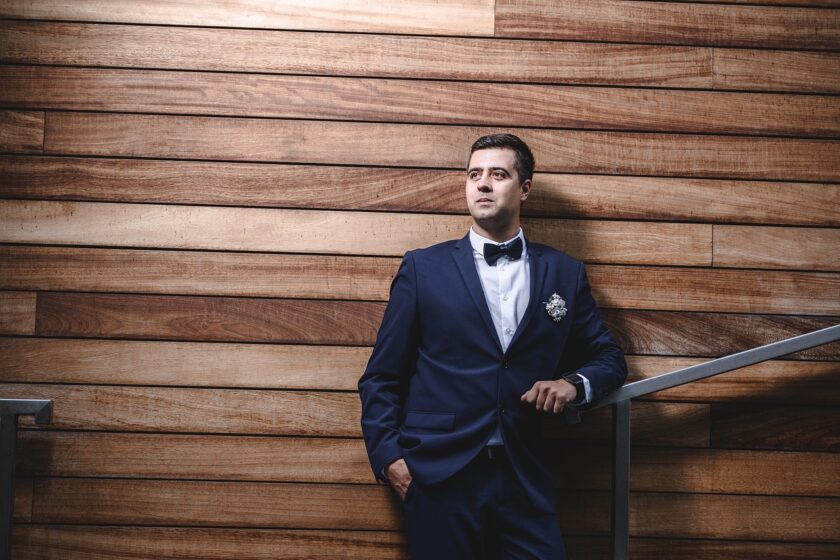Formal wear for men is a timeless and essential part of any well-dressed wardrobe. Whether you’re attending a special occasion, a business meeting, or a formal event, dressing appropriately can make a significant impact on your appearance and confidence. In this comprehensive guide, we’ll explore the key elements of formal wear for men, provide valuable tips for selecting the right outfits, and offer inspiration for various occasions.
Understanding Formal Wear
Formal wear typically refers to clothing that adheres to a strict dress code, often requiring a suit and tie. However, the specific requirements can vary depending on the formality of the event. Here’s a breakdown of the different levels of formal wear:
- Black Tie: The most formal level of dress, requiring a black tuxedo, white shirt, black bow tie, and black patent leather shoes.
- Semi-Formal: Slightly less formal than black tie, semi-formal attire typically involves a dark-colored suit, white shirt, tie, and dress shoes.
- Business Formal: This level of dress is appropriate for formal business meetings and events. It requires a tailored suit, dress shirt, tie, and dress shoes.
Essential Pieces for a Formal Wardrobe
- Suit: A well-tailored suit is the cornerstone of any formal wardrobe. Choose a classic cut in a neutral color like navy, black, or gray.
- Dress Shirt: Invest in high-quality dress shirts made from fabrics like cotton or linen. White is a versatile choice, but you can also consider other colors like light blue or pink.
- Tie: A silk tie is a must-have accessory for formal wear. Choose a color and pattern that complements your suit and shirt.
- Dress Shoes: A pair of polished dress shoes is essential. Oxfords or loafers are classic choices for formal occasions.
- Belt: Ensure your belt matches your shoes in color and style.
- Pocket Square: A pocket square can add a touch of personality to your formal outfit. Choose a color or pattern that complements your tie.
Tips for Choosing the Right Formal Wear
- Fit is key: Ensure your suit fits perfectly. The jacket should be tailored to your shoulders, waist, and length, while the trousers should fit comfortably around your waist and legs.
- Consider the occasion: The level of formality of the event will dictate the appropriate attire. Research the dress code and choose your outfit accordingly.
- Pay attention to details: Small details like cufflinks, a watch, and a belt can elevate your formal look.
- Accessorize wisely: Choose accessories that complement your outfit and don’t overpower it.
- Practice good grooming: Ensure your hair, beard, and nails are well-groomed.
Formal Wear for Different Occasions
Black Tie
- Tuxedo: A black tuxedo is the quintessential black-tie attire. It should be made from high-quality fabric like wool or silk.
- Shirt: A white dress shirt with a wing collar is the traditional choice.
- Bow Tie: A black silk bow tie is essential for black-tie events.
- Cummerbund: A black or white cummerbund is worn to cover the waist of the tuxedo.
- Shoes: Black patent leather shoes are the standard for black-tie events.
- Accessories: A pocket square is optional but can add a touch of personality.
Semi-Formal
- Suit: A dark-colored suit, such as navy or black, is appropriate for semi-formal occasions.
- Shirt: A white dress shirt is the most versatile choice.
- Tie: A patterned or solid-colored tie can be worn with a semi-formal suit.
- Shoes: Black or brown dress shoes are suitable.
- Accessories: A pocket square is optional.
Business Formal
- Suit: A dark-colored suit, such as navy or gray, is appropriate for business formal events.
- Shirt: A white dress shirt is the most versatile choice.
- Tie: A patterned or solid-colored tie can be worn with a business formal suit.
- Shoes: Black or brown dress shoes are suitable.
- Accessories: A pocket square is optional.
Other Formal Occasions
- Weddings: The dress code for weddings can vary, but a dark-colored suit with a tie is generally appropriate. For more formal weddings, a black-tie tuxedo may be required.
- Formal Dinners: A dark-colored suit with a tie is appropriate for most formal dinners.
- Gala Events: Gala events often require black-tie attire.
- Corporate Events: The dress code for corporate events can vary, but a business formal suit is generally appropriate.
Tips for Choosing the Right Formal Wear
- Consider the occasion: The level of formality of the event will dictate the appropriate attire.
- Pay attention to details: Ensure your suit fits perfectly and your accessories complement your outfit.
- Experiment with different styles: Don’t be afraid to experiment with different colors, patterns, and accessories to find your personal style.
- Invest in quality: A well-made suit and accessories will last for years to come.
- Practice good grooming: Ensure your hair, beard, and nails are well-groomed.
Additional Considerations
- Climate: Consider the climate when choosing your formal wear. A light-colored suit may be more appropriate for warm weather, while a darker color may be better suited for cooler temperatures.
- Personal style: While formal wear has specific guidelines, you can still express your personal style through your choices of accessories and fabrics.
- Comfort: Ensure your formal wear is comfortable to wear for extended periods. Choose fabrics that are breathable and allow for easy movement.
By following these guidelines and incorporating your personal style, you can create a sophisticated and memorable formal look.

